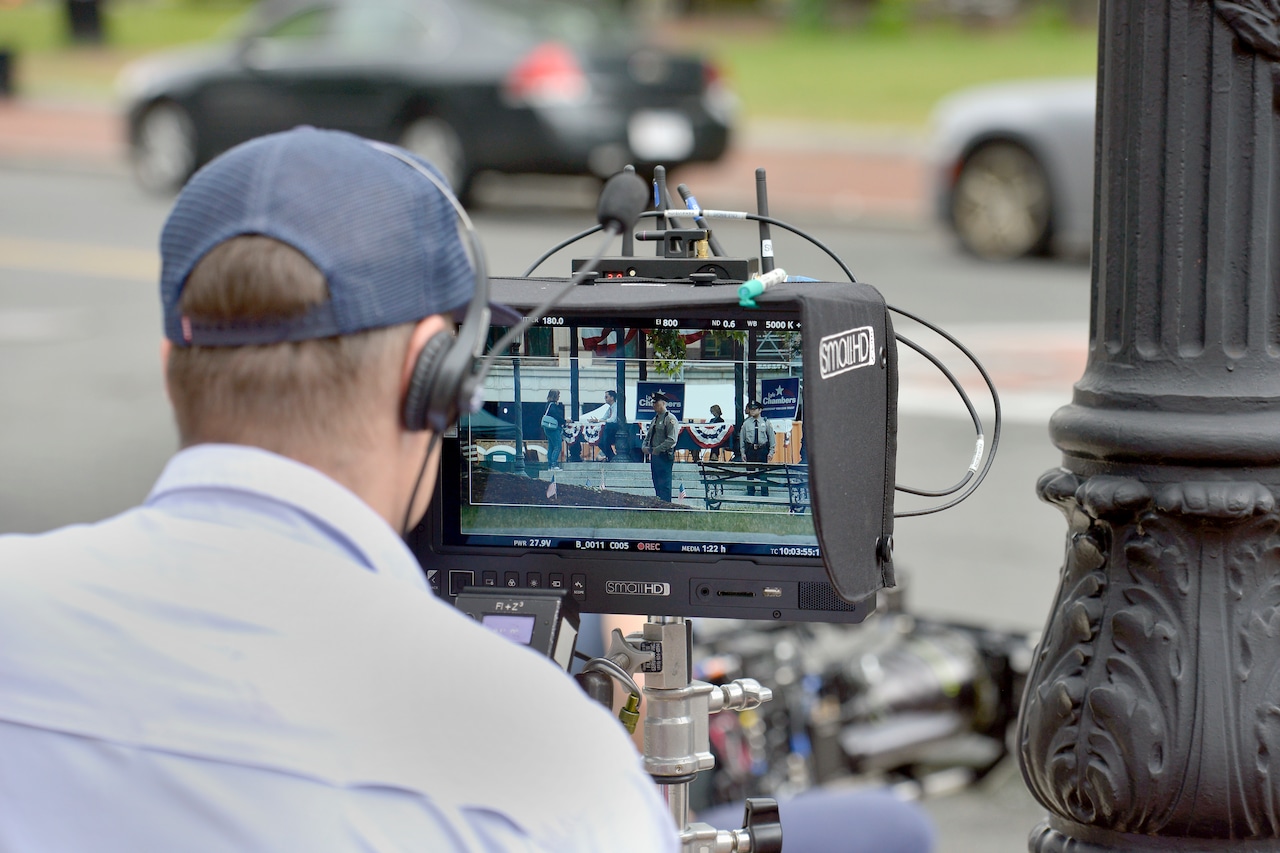A new exhibition in Boston welcomes guests to travel back in time, following the journey of passengers and crew aboard the RMS Titanic with genuine artifacts on display from the ship’s ill-fated maiden voyage — items resurfaced from the shipwreck deep under the Atlantic Ocean.
Called “Titanic: The Artifact Exhibition,” the traveling gallery showcases nearly 250 items from parts of the ship itself to personal belongings of passengers, all of which have been recovered by RMS Titanic, Inc. (RMST), in addition to lifelike recreations of spaces where passengers and crew would’ve spent their days onboard.
RMST is the only company permitted by law to recover artifacts from the Titanic wreck site, having been granted salvor-in-possession rights. It has conducted nine expeditions to recover these items from the seafloor since 1987, shortly after the wreck of the Titanic was first discovered in 1985. Its most recent expedition was this summer.
- Read more: ‘Al fresco’ dining, drinks by the pool — check out this rooftop Seaport bar and restaurant
Tomasina Ray, the director of collections and the president of RMST, recently led MassLive through a tour of the Boston exhibition, which opened in mid-October and will run until Feb. 2, 2025.
“We definitely want people to find something that excites them,” Ray said. “We want them to find another way into the story [of the Titanic]. Something that makes them more curious, and then something they’re excited to tell their friends and family about as well.”
The exhibition is currently housed within The Saunders Castle at Park Plaza at 130 Columbus Ave. in Boston’s Bay Village neighborhood. Previously, it was in Columbus, Ohio until September. RMST also has permanent U.S. exhibitions in Las Vegas, Nevada and in Orlando, Florida.
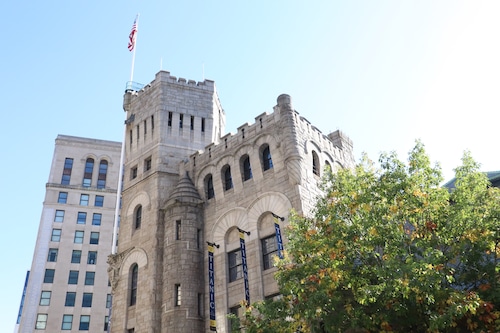
This historic armory in Boston is hosting Titanic: The Artifact Exhibition.Chris McLaughlin
Upon entry, guests are handed a White Star Line boarding pass with the profile of an actual person who sailed on Titanic, giving them a brief description with his or her name, age, class, place of origin, and facts about the individual. However, whether the person survived the catastrophe remains a mystery until the end.
The exhibition begins with the real crow’s nest bell of the Titanic, an object which was used to tell time on the ship, but also to warn of an emergency, Ray said, much like when the ship struck the iceberg.
The rest of the exhibition follows a largely chronological and top-to-bottom order descending lower and lower into the ship.
First, is a room dedicated to the construction of the ship, with a scale model of Titanic on view to give guests a perspective of the size and features of the boat before it sank.
Guests then “board” the ship, entering a first-class cabin hallway which Ray described as a “transitional space,” before opening into an area dedicated to the social life and amenities of passengers.
Among the most eye-catching features of the exhibition is its meticulous recreation of the Titanic’s opulent Grand Staircase, featuring a glass dome, detailed wood carvings and metalwork.
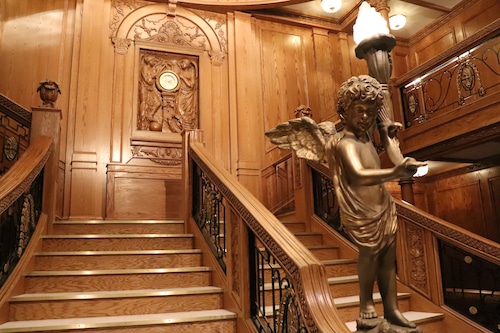
A recreation of the opulent Grand Staircase of the Titanic.Chris McLaughlin
Ray said the exhibitors wanted a “realism” to the space, adding they wanted guests to “be in it, to feel it,” rather than merely observing a computer-generated or still image of the staircase.
Ray noted that due to few photographs of Titanic before it sank, much of the Grand Staircase is actually modeled off of Titanic’s sister ship, the RMS Olympic, which shared a largely comparable design.
Overall, the recreation of the staircase took two weeks to build out at the Saunders Castle and required multiple truckloads of materials, according to Ray.
Ray said the goal of riding on Titanic for many well-to-do families of the era, such as the Guggenheims and the Astors, was their visibility on the ship as a “social affair” for the elite.
Ray said that electricity on passenger ships was still a novelty at the time. She added the ship featured flush toilets — a rarity for lower-class passengers — who likely would have never used one before. The exhibition even features a porcelain flush toilet retrieved from the seabed.
Touches of first-class living — such as lighting ornamentation, jewelry, and even champagne bottles with alcohol still inside — are among other salvaged items on exhibit.
The journey across the Atlantic from Europe to New York City would have taken five days in 1912 aboard Titanic, Ray said. For the first-class passengers, this would have been the equivalent of a five-night stay in a luxury hotel, she added.
Whereas for those in steerage, Ray said, each person’s ticket would have cost about $40 back then, or the equivalent of about $900 today. Third-class passengers were grouped together in rooms by gender unless traveling with family. A recreation in the exhibition shows a third-class cabin with two bunk beds for four passengers to share.
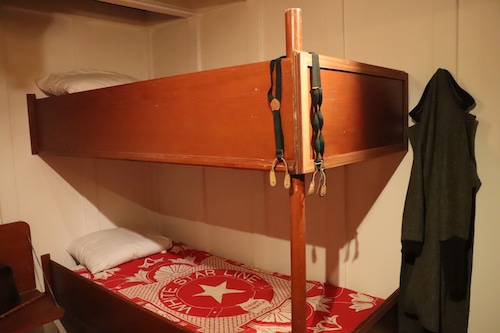
A recreation of a third class passenger bunk on the Titanic.Chris McLaughlin
The exhibition continues to guide guests further into the belly of the ship until they reach a model of the boiler room — basked in red light — where crew members pumped coal into furnaces to keep the ship’s engines running.
The only artifacts that RMST is legally allowed to sell from the Titanic wreck are pieces of coal from the Titanic debris field, as there was so much of it on the ship that it is considered plentiful.
The exhibition’s gift shop sells small pieces of Titanic coal recovered from the seafloor, allowing guests to take a remnant of Titanic home with them. The sale of the coal helps to fund RMST’s work and research, according to Ray.
The exhibition then turns to the tragedy of the Titanic. Walls with illuminated messages highlight the ice warnings that were issued on the night of April 14 into April 15, 1912.
One of the most remarkable items salvaged from the Titanic wreck is a davit crane — a device which was used to launch lifeboats of survivors into the sea from the sides of the ship.
The crane is a personal favorite of Ray’s because, in her words, “it is just one of those things that only can be experienced in person, to be next to something that witnessed that night and played such an important role in lifeboat launching.”
“Also, just to be standing next to something that puts you in scale of Titanic,” Ray added. “That’s only something that can be done at this exhibition. And so that alone makes it worth coming for me.”
A light projection of a Titanic lifeboat on the floor of the exhibition next to the resurrected davit puts into perspective that only up to 65 people could fit into each lifeboat.
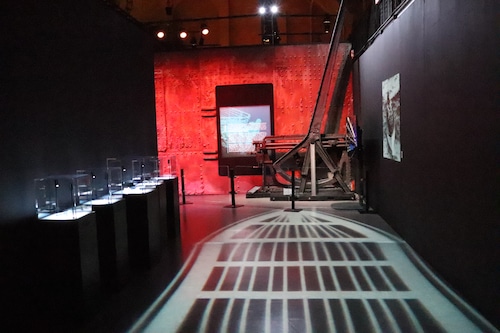
A recovered davit crane used to lower lifeboats on the Titanic and a life-sized projection of a Titanic lifeboat on the floor. The lifeboats could only hold up to 65 people each.Chris McLaughlin
Despite the ship being only two-thirds full on its maiden voyage, Ray said not having enough lifeboats, coupled with factors like a crew unaccustomed to Titanic’s emergency procedures, mixed signals from officers and a slow response to severity of the iceberg strike hampered the evacuation.
Famously, women and children were prioritized for lifeboats, but Ray noted on one side of the ship officers gave commands of “women and children only” compared to “women and children first” on the other side. Depending what side of the ship someone was trying to evacuate from and when, passengers stood a better or worse chance of escaping the sinking.
At the end of the exhibit, a wall lists out all the passengers and crew members of the ship by name divided by whether their lives were saved or lost. Here, guests look for the names on the lists themselves or scan the QR code on their boarding pass to find out if the profile they’ve been given was a survivor or member of the deceased.
The final room of the exhibit also showcases items which have been linked to specific passengers, such as pieces of clothing.
In one display case, the belongings of student Edgar Samuel Andrew are featured. These include a towel with his name inscribed on it, in addition to a swastika. Ray clarified that the use of the symbol predates its Nazi subversion and rather reflects its link to Hinduism and Buddhism during this era.
Ray also pointed to a postcard of a local minor landmark, The Boston Stone, which belonged to Andrew. She said this exhibition is the first time the postcard has ever been put on public display. Andrew did not survive the sinking of the Titanic.
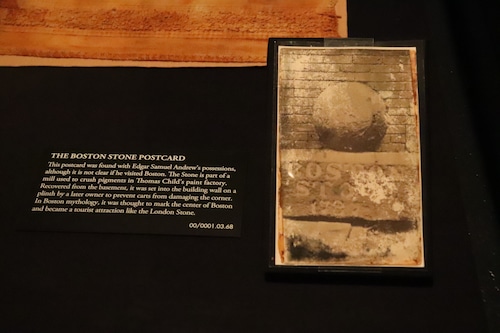
A postcard of The Boston Stone, a local tourist attraction, recovered from the Titanic wreckage on display for the first time ever. The postcard belonged to Edgar Samuel Andrew, a passenger who did not survive the sinking.Chris McLaughlin
The exhibition also displays the work of RMST and its partners in conducting research and exploratory expeditions to the Titanic wreck site and debris field at the bottom of the Atlantic.
A model of a submersible used in the first expeditions by RMST with claw-like extensions called manipulators shows how researchers are able to dive thousands of feet below the surface to examine and extract objects from the deep.
In before-and-after comparisons, guests can examine how objects remained stagnant on the seabed, as if frozen in time. Perfectly preserved dinner plates remained stacked in place even as the wooden cabinet that once held them disintegrated with time, or a wooden bench whose metal end pieces are all that remains of it.
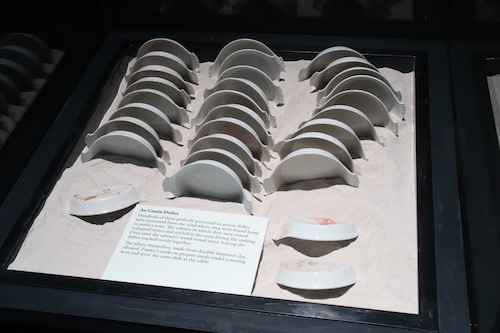
Stacked dishes recovered from the seafloor of the Titanic wreckage. The dishes remained stacked when recovered thanks to being in a wooden cabinet that protected them which disintegrated with time.Chris McLaughlin
In more interactive elements, the exhibition allows guests to touch a small metal piece of Titanic’s hull in addition to an ice sculpture of the berg that struck the Titanic, which guests are also invited to feel with their hands.
The exhibition also pays tribute to Paul-Henri “P.H.” Nargeolet, a famed Titanic expert and a longtime member of RMST, who died in the June 2023 implosion of the Titan submersible. Nargeolet conducted a record 37 manned submersible dives to the Titanic helping to retrieve many of the artifacts now on display at the exhibition.
Ray said a primary goal of the exhibition is to keep the memory of Titanic and its passengers and crew alive in people’s hearts and minds.
For those interested in visiting the exhibition and seeing it for themselves, Ray recommended purchasing timed entry tickets online in advance. Tickets are available on “Titanic: The Artifact Exhibition’s” website.
The exhibition is open Wednesdays through Sundays from 10 a.m. to 6 p.m. Wednesdays and Thursdays, from 10 a.m. to 8 p.m. Fridays and Saturdays, and from 11 a.m. to 7 p.m. on Sundays.
The exhibition is presented by The Gold Group, and its collections were curated by RMST and E/M Group.
According to Ray, while the next stop on the exhibition’s tour is not public knowledge, she revealed it will be elsewhere in North America.






